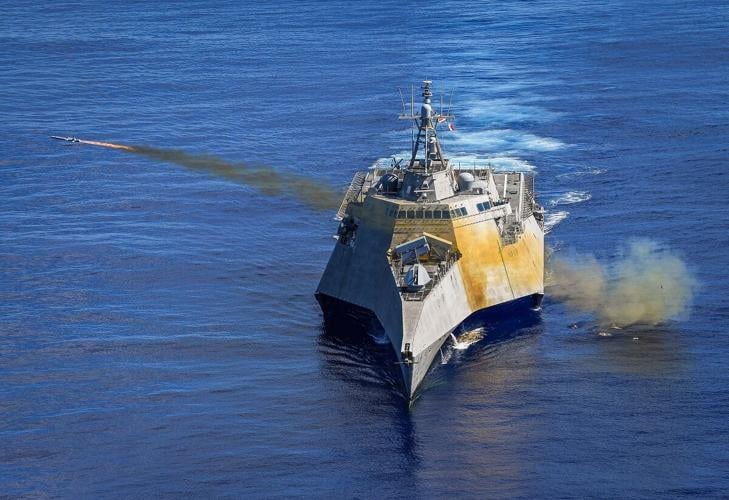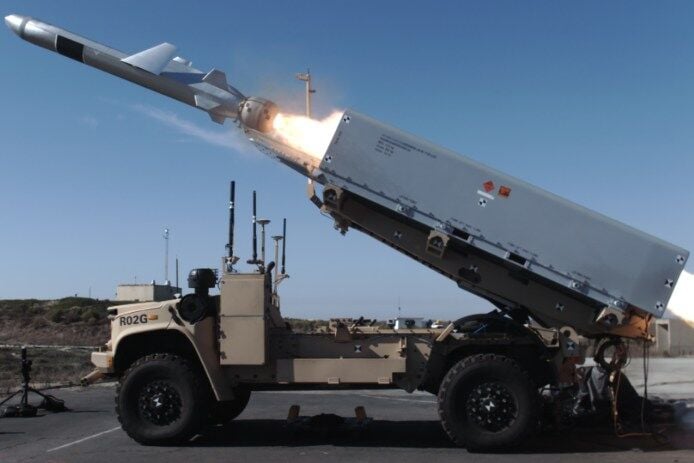An anti-ship missile made by Tucson-based Raytheon Missiles & Defense and Norwegian defense contractor Kongsberg is making its way onto U.S. Navy ships and may go ashore with the Marine Corps.
The Navy is planning to mount the Naval Strike Missile on 31 of its 35 Littoral Combat Ships (LCS), a relatively new class of shallow-water defense craft, within the next 18 months, Adm. Mike Gilday told lawmakers Thursday.
The Navy also will add anti-submarine capabilities to 15 LCS vessels and a similar number will get mine-warfare capabilities, Gilday said at a virtual hearing of the House Appropriations defense subcommittee.
“In a nutshell, we’re very bullish on LCS and where we’re headed,” Gilday said.
An effort to equip the Marines with Naval Strike Missiles as a ground-launched weapon against ships and ground targets also is advancing.
In 2018, Raytheon and Kongsberg Defence Systems won a contract worth up to $850 million over time, with $15 million initially awarded, to make Naval Strike Missiles for the Navy. Each Naval Strike Missile currently costs about $2 million, based on Pentagon budget documents.
In March 2021, the Navy announced a successful test firing of a Naval Strike missile from the LCS USS Gabrielle Giffords, named for the former Arizona congresswoman.
Raytheon and Kongsberg announced in 2016 they would co-produce the Naval Strike Missile, developed by Kongsberg and in service since 2012 with the navies of Norway, Poland and Malaysia.
With a range of more than 100 miles at high subsonic speeds, the Naval Strike Missile is capable of striking targets on land as well as sea with a combination of advanced guidance and homing technologies, with a radar-evading stealth design.
Raytheon is performing missile final assembly and testing in Tucson, where it is the region’s largest employer with more than 13,000 workers.
Meanwhile, the Navy and Raytheon recently released the first image of a test firing of the Naval Strike Missile from an unmanned Marine Corps truck launcher last November.
The inaugural test of the Navy Marine Expeditionary Ship Interdiction System off the California coast proved the system’s ability to fire the naval missile from a Marine ground launcher and score a direct hit against a surface target at sea, Raytheon said.
The Marines are reportedly looking to deploy hundreds of Naval Strike Missiles by 2030.





